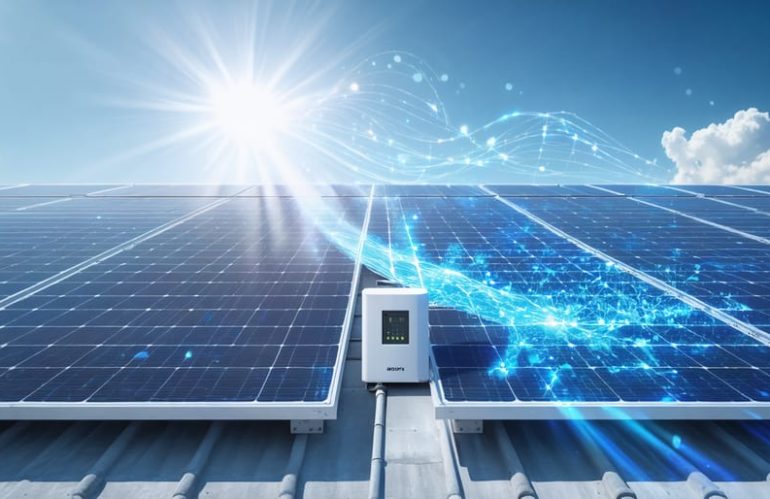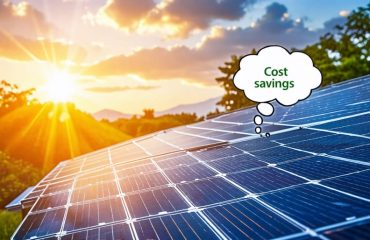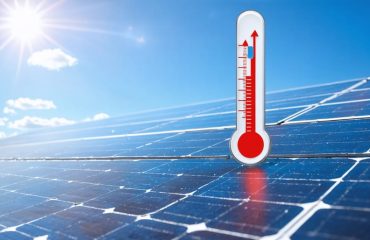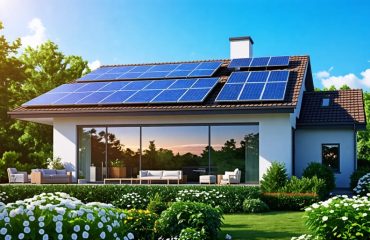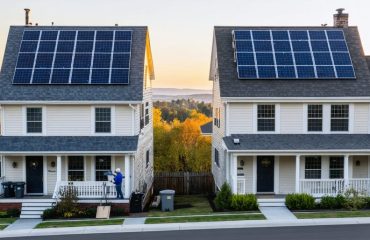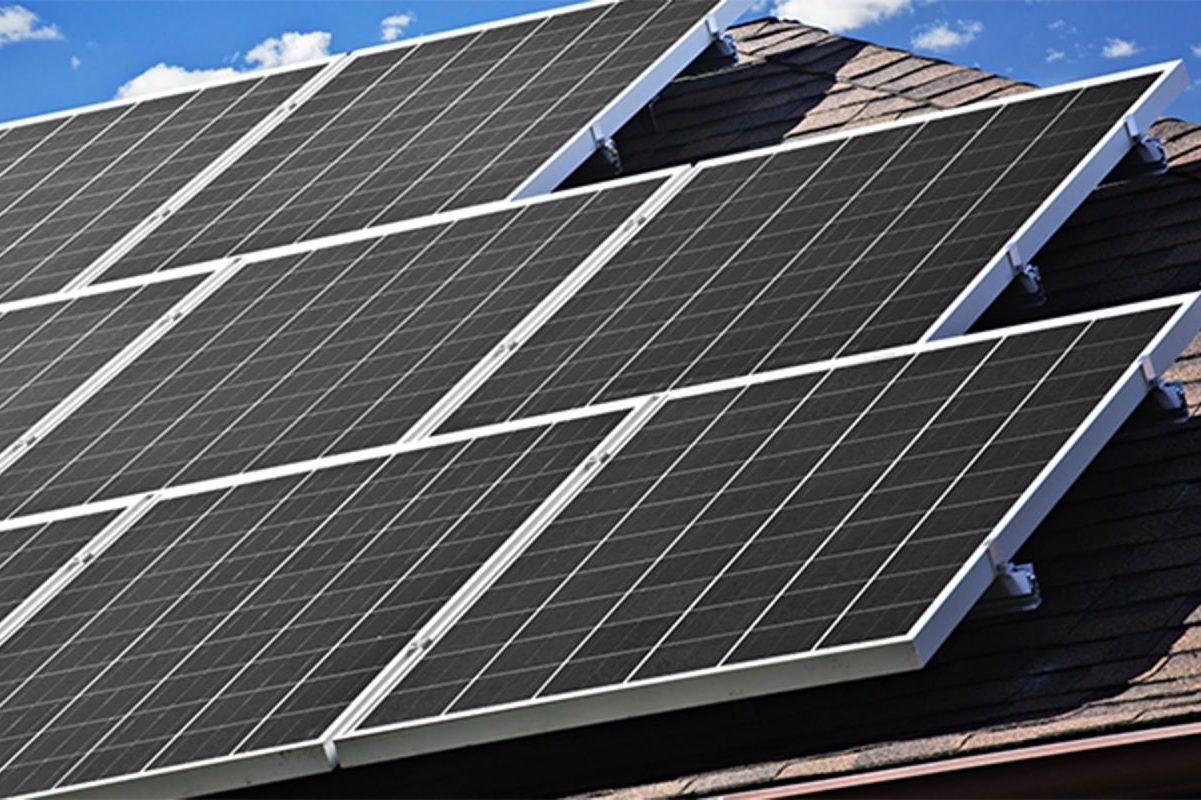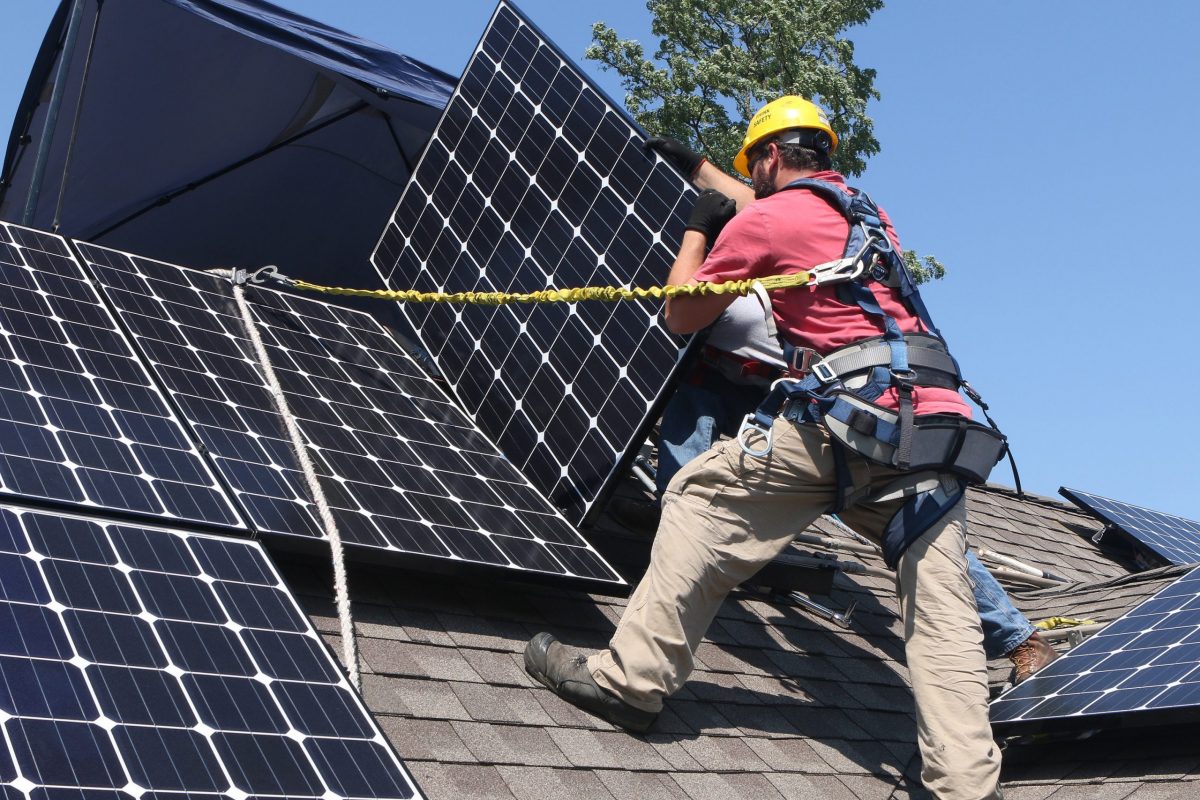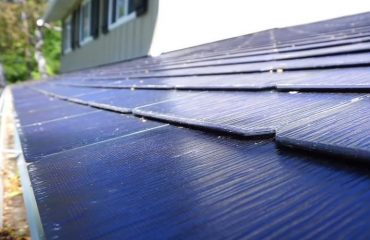An 8kW solar system typically generates between 30-40 kWh of electricity per day, making it an ideal choice for medium to large households looking to significantly reduce their energy bills. This powerful residential setup can produce enough energy to power essential appliances, heating systems, and even charge an electric vehicle, depending on your location and installation conditions.
The daily output of your 8kW system varies based on several crucial factors: geographic location, panel orientation, weather patterns, and seasonal changes. In optimal conditions – such as those found in sun-rich regions like Arizona or California – your system could exceed 40 kWh daily during peak summer months. However, even in less sunny areas, modern solar technology ensures consistent energy production year-round.
Understanding your potential daily output helps set realistic expectations and maximize your investment. While the initial numbers might seem technical, the real-world impact is simple: an 8kW system can offset 80-90% of an average household’s electricity needs, potentially saving thousands annually while contributing to a more sustainable future.
What to Expect from Your 8kW Solar System
Average Daily Production Numbers
An 8kW solar system typically produces between 24 and 35 kWh per day, though actual output varies based on several factors. During peak summer months with optimal conditions, your system might generate up to 40 kWh daily. Winter production usually drops to around 20-25 kWh per day due to shorter daylight hours and lower sun intensity.
Weather conditions significantly impact daily production. On clear, sunny days, expect maximum output near the system’s rated capacity. Cloudy days typically reduce production by 25-35%, yielding about 15-20 kWh. Light rain or overcast conditions might still generate 10-15 kWh daily, demonstrating that solar panels continue working even in less-than-ideal conditions.
Your geographic location plays a crucial role in determining whether an right size solar system meets your needs. For instance, homes in Arizona or California might see higher daily averages than those in Washington or Oregon. Panel orientation and tilt angle can also affect production by 5-15%, with south-facing panels at optimal angles producing the best results.
Remember that these numbers represent averages, and your actual daily output may vary based on specific installation conditions and local weather patterns.
Seasonal Output Variations
Your 8kW solar system’s daily output naturally fluctuates throughout the year due to seasonal changes. During summer months, you can expect peak performance with longer daylight hours and more direct sunlight, often producing 20-30% more energy than the yearly average. However, as temperature affects solar panel output, extremely hot days might slightly reduce efficiency.
Winter brings shorter days and lower sun angles, typically resulting in reduced output – usually 30-40% less than summer peaks. However, the cooler temperatures can actually help panel efficiency, partially offsetting the reduced sunlight hours. Spring and fall generally provide moderate, steady production levels that closely match your system’s average daily output.
Cloud cover and weather patterns specific to your location also play a significant role in seasonal variations. To get the most from your 8kW system year-round, consider adjusting your energy usage patterns to match peak production periods and ensure your panels are properly maintained through all seasons.
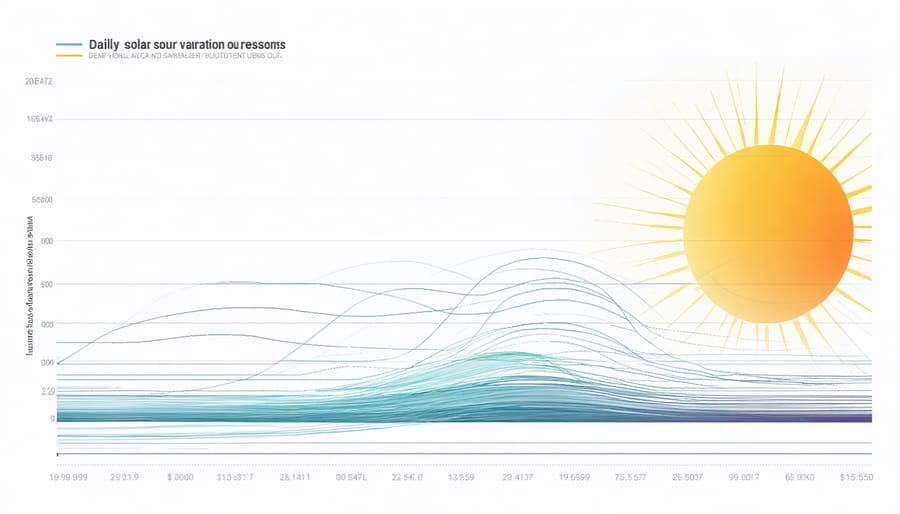
The Critical Role of Inverter Efficiency
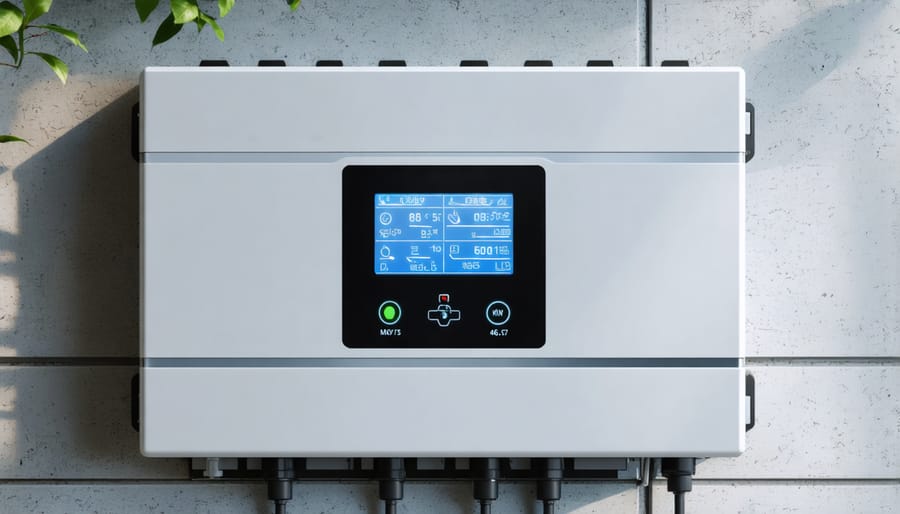
Understanding Inverter Efficiency Ratings
Inverter efficiency plays a crucial role in determining how much usable power your 8kW solar system actually produces. Think of your inverter as a translator, converting the DC power from your solar panels into AC power that your home can use. Most modern solar inverters operate at efficiency rates between 95% and 98%, meaning that only a small percentage of power is lost during the conversion process.
For an 8kW system, even a 1% difference in inverter efficiency can impact your daily output by 0.08kW. Over a year, this small difference adds up to significant energy savings. When selecting an inverter, look for those with CEC (California Energy Commission) or European efficiency ratings, as these provide real-world performance metrics rather than just ideal laboratory conditions.
Premium inverters typically offer higher efficiency ratings and often include features like smart monitoring capabilities, which help you track your system’s performance. While they may cost more initially, the increased energy production usually justifies the investment over time.
To maximize your system’s output, ensure your inverter is properly sized for your 8kW setup. An undersized or oversized inverter can reduce overall system efficiency. Most installers recommend an inverter size ratio between 75% and 100% of your total panel capacity, depending on your specific installation and local climate conditions.
Real-World Impact on Daily Output
Let’s look at how inverter efficiency affects your 8kW solar system’s real-world performance through some practical examples. On a typical sunny day, your system might generate 40 kWh of potential energy. With a high-efficiency inverter operating at 97%, you’d receive about 38.8 kWh of usable power. However, if your inverter efficiency drops to 90%, you’d only get 36 kWh – that’s nearly 3 kWh less energy available for your home.
This difference becomes more significant over time. For instance, running your air conditioner (3kW) for 4 hours requires 12 kWh. With the more efficient inverter, you could run it for an extra hour compared to the less efficient one. Similarly, you could run your electric oven (2.5kW) for additional cooking time or power your electric vehicle charger longer.
To put this in perspective, the energy difference from inverter efficiency could power:
– A full load of laundry (2 kWh)
– 6 hours of LED lighting throughout your home
– A day’s worth of refrigerator operation
During peak summer months, when your system performs at its best, a more efficient inverter could mean the difference between having surplus energy to sell back to the grid or needing to draw power from it. This translates directly into higher energy savings and better returns on your solar investment.
Maximizing Your System’s Performance
Choosing the Right Inverter
Selecting the right inverter is crucial for maximizing your 8kW solar system’s performance. For an 8kW setup, you’ll typically want to choose an inverter with a capacity between 6kW and 8kW to ensure optimal efficiency. While it might seem logical to match the inverter size exactly to your system, slightly undersizing can actually improve overall system performance, as inverters operate most efficiently when running close to their rated capacity.
Consider string inverters for simple roof layouts and microinverters for more complex installations or areas with partial shading. String inverters are generally more cost-effective but offer less flexibility, while microinverters provide panel-level optimization and better performance in challenging conditions.
Look for inverters with efficiency ratings of 97% or higher to minimize conversion losses. Modern inverters also come with smart monitoring features that help you track system performance through mobile apps or web portals. This real-time data allows you to quickly identify and address any issues affecting your system’s output.
When choosing an inverter, factor in warranty length, typically ranging from 5 to 12 years, and ensure the manufacturer has a strong reputation for reliability and customer support.
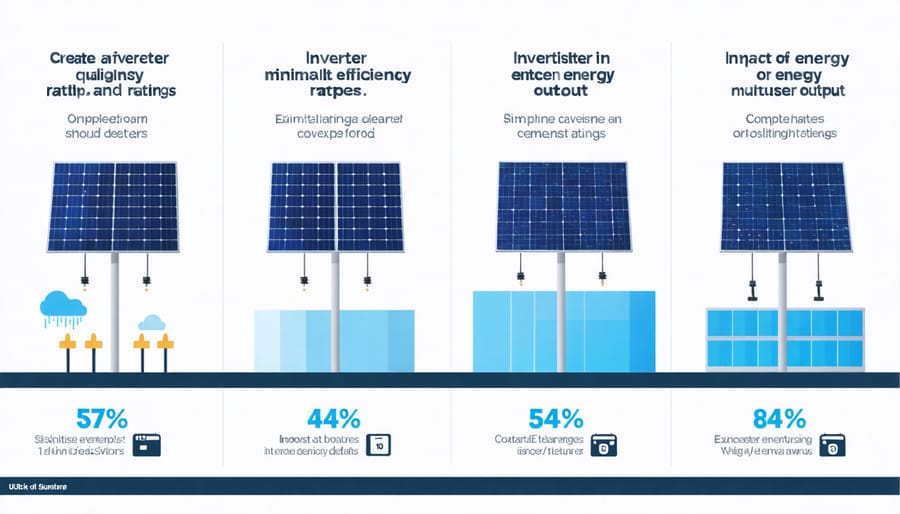
Maintenance Tips for Peak Efficiency
Regular maintenance is crucial to ensure your 8kW solar system continues operating at peak efficiency. Start by scheduling quarterly inspections of your inverter’s display panel to check for error codes or unusual readings. Keep the area around your inverter clean and well-ventilated, as excessive heat can reduce its performance.
To boost your solar panel performance, monitor your inverter’s efficiency ratings through its built-in monitoring system. Most modern inverters come with smartphone apps that make this process simple and convenient. Look for any significant drops in daily output, which might indicate maintenance is needed.
Clean your inverter’s cooling fins every six months to prevent dust buildup, and ensure all electrical connections remain tight and corrosion-free. During summer months, check that the inverter’s ventilation isn’t blocked by debris or vegetation. If you notice any unusual sounds or see the inverter frequently shutting down, contact a qualified technician immediately.
Remember to keep detailed records of your system’s performance and any maintenance performed. This documentation helps identify patterns and potential issues before they become serious problems, ensuring your investment continues to deliver optimal returns for years to come.
An 8kW solar system represents a significant step toward energy independence and sustainable living. With typical daily outputs ranging from 32-40 kWh, depending on your location and installation conditions, this system size offers substantial power generation for most households. Remember that factors like seasonal changes, weather patterns, and system maintenance all play crucial roles in your actual output.
By investing in an 8kW solar system, you’re not just reducing your carbon footprint – you’re making a smart financial decision that can significantly lower your energy bills. Regular maintenance, proper panel positioning, and working with qualified installers will help ensure your system performs at its best year-round.
Consider monitoring your system’s performance through available smart technologies to optimize your energy usage and maximize your return on investment. If you’re thinking about making the switch to solar, now is an excellent time to take action. With current incentives and improving technology, an 8kW system offers an excellent balance of power output and cost-effectiveness for many homeowners.
Take the first step toward energy independence by consulting with local solar providers who can assess your specific needs and site conditions.

